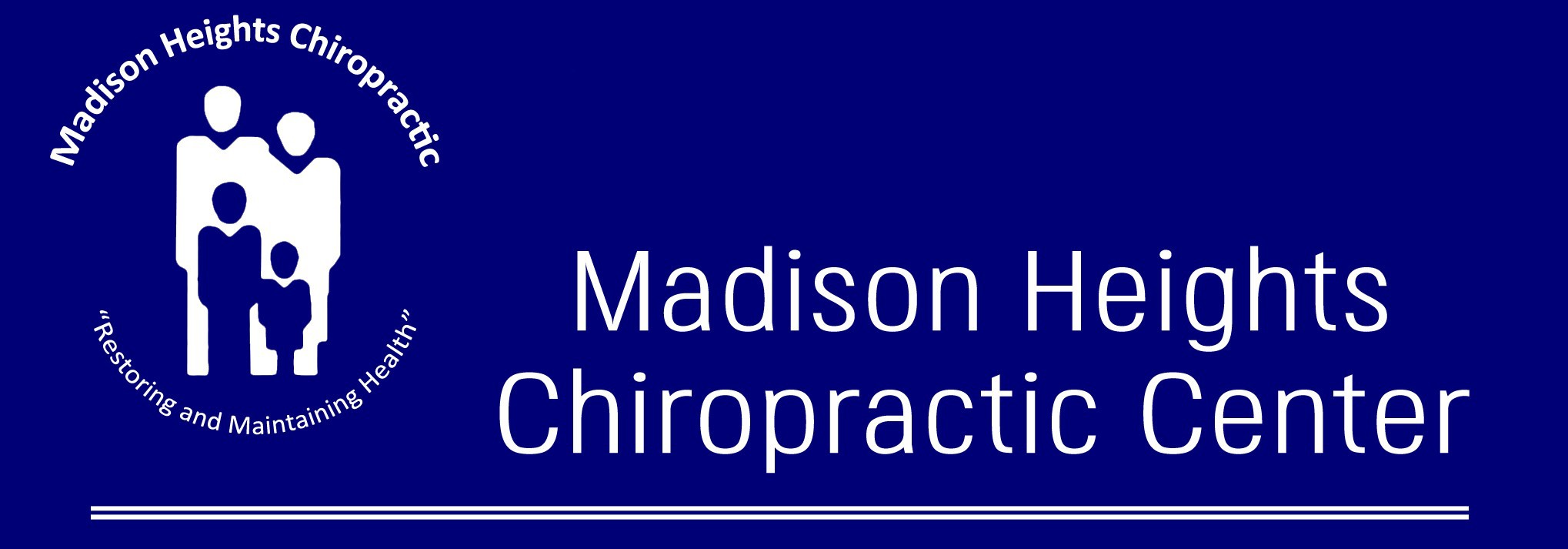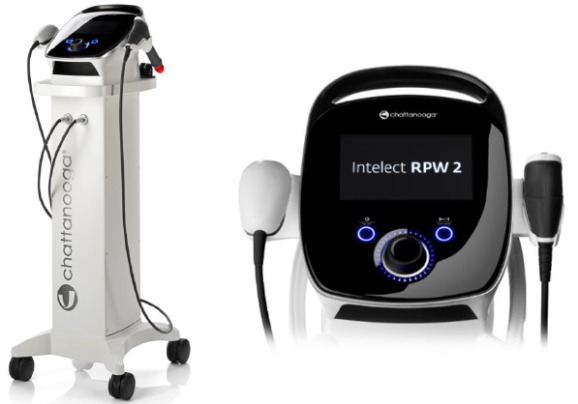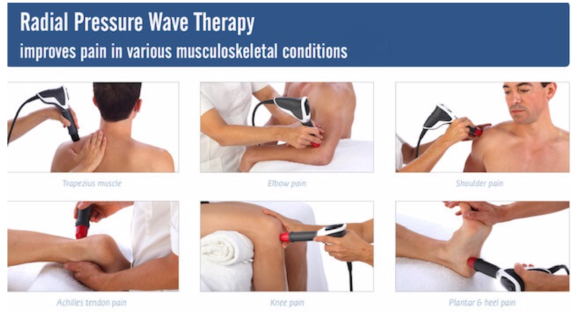Chattanooga® Intelect® RPW 2
What is Radial Pulse Wave Therapy?
Radial Pulse Wave Therapy (RPWT) is a revolutionary, non-invasive treatment that utilizes high-energy acoustic waves to stimulate healing in various musculoskeletal conditions. This therapy is designed to reduce pain, enhance recovery, and improve your overall quality of life.
Benefits of Radial Pulse Wave Therapy
1. Effective Pain Relief
- Natural Pain Management: RPWT promotes the release of endorphins, the body’s natural painkillers, providing significant relief from chronic pain and discomfort.
- Targeted Approach: The therapy focuses on specific areas of pain, effectively addressing conditions like tendonitis, plantar fasciitis, and joint pain.
2. Improved Blood Circulation
- Enhanced Oxygenation: The acoustic waves stimulate blood flow, increasing the delivery of oxygen and nutrients to the affected areas, which accelerates healing.
- Metabolic Waste Clearance: Improved circulation helps flush out toxins and metabolic waste, further supporting tissue recovery.
3. Accelerated Tissue Regeneration
- Collagen Production: RPWT stimulates collagen synthesis, a crucial component for repairing and regenerating tissues.
- Cell Activation: The therapy activates fibroblasts and other cells involved in the healing process, enhancing recovery efficiency.
4. Reduction of Scar Tissue
- Breaking Down Adhesions: RPWT effectively breaks down scar tissue and adhesions, improving flexibility and restoring normal function.
- Realignment of Tissue: The therapy reorganizes collagen fibers, leading to better functional outcomes.
5. Non-Invasive and Safe
- Minimal Risks: RPWT is a non-invasive procedure, carrying fewer risks compared to surgical interventions. Side effects are typically mild and temporary.
- Quick Recovery: Most patients can return to their daily activities immediately after treatment, making it a convenient option.
6. Versatile Treatment Options
- Broad Applicability: RPWT is effective for a variety of conditions, including sports injuries, chronic pain syndromes, and post-surgical rehabilitation.
- Customized Care: Treatments can be tailored to meet the specific needs of each patient.
7. Quick and Efficient Sessions
- Time-Efficient: Each treatment session lasts only 10 to 20 minutes, easily fitting into busy schedules.
- Cumulative Benefits: While some patients experience immediate relief, a series of sessions often leads to the best long-term results.
8. Complementary to Other Therapies
- Holistic Approach: RPWT can be integrated with physical therapy, chiropractic care, or other treatments, enhancing overall recovery.
- Comprehensive Healing: This therapy supports a well-rounded rehabilitation plan that addresses multiple aspects of a patient’s condition.
Contraindications
While Radial Pulse Wave Therapy is generally safe and effective, it is important to be aware of certain contraindications:
- Pregnancy: Use of RPWT is not recommended for pregnant women.
- Active Infections: Avoid treatment in areas with active infections or open wounds.
- Tumors: RPWT should not be applied over tumors or suspected cancerous lesions.
- Severe Vascular Disorders: Patients with severe vascular conditions or clotting disorders should consult a healthcare provider before undergoing therapy.
- Recent Surgery: Avoid RPWT on areas that have recently undergone surgical procedures until cleared by a physician. (A note from your physician will need to be provided prior to treatment)
- Nerve Disorders: Patients with certain neurological conditions should seek professional guidance prior to treatment.
Patient that have the above conditions do not qualify to receive this treatment.
Post Treatment Experience:
After undergoing Radial Wave Therapy, patients may experience a variety of after-effects. These are typically mild and temporary, but they can vary depending on the individual and the treated area. Some common after-effects include:
1. Mild Pain or Discomfort:
-
It's common to feel some soreness or discomfort in the treated area after the session. This is usually temporary and can last for a few hours to a day. It's often described as a feeling similar to muscle soreness after exercise.
2. Redness and Swelling:
-
The treated area might appear slightly red or swollen due to increased blood circulation and the therapeutic effects of the shockwaves. This usually resolves within a few hours or a day.
3. Bruising:
-
In some cases, especially if higher intensity settings were used, mild bruising can occur in the treatment area. This is typically not severe and should dissipate over a few days.
4. Temporary Stiffness:
-
Some patients may experience temporary stiffness or tightness in the treated area, especially if the shockwaves were focused on an area with significant scar tissue or calcifications.
5. Increased Pain Before Improvement:
-
It's possible for patients to experience a temporary increase in pain shortly after the session. This can be a normal response as the body begins the healing process. However, it generally subsides and leads to pain relief and improved function in the long term.
6. Fatigue:
-
Some patients report feeling a bit more tired than usual after treatment. This can be attributed to the body’s efforts in responding to the therapy and initiating healing processes.
7. Enhanced Mobility and Stretching Sensation:
-
After the initial discomfort fades, many patients notice a feeling of increased flexibility and mobility in the treated area, especially if stiffness or scar tissue was previously limiting movement.
8. Minor Numbness:
-
Occasionally, patients may experience temporary numbness or a tingling sensation in the treated area, but this typically resolves quickly.
Standard Radial Wave Therapy Schedule
- 1 session per week
- 3-6 sessions for each area of treatment
Example Timeline for treatment
(each case is unique so timelines may vary depending on the case severity)
|
Week |
Session |
Notes |
|
1 |
1 |
Initial treatment, assessment of pain level |
|
2 |
2 |
Pain may slightly worsen before improvement |
|
3 |
3 |
Early signs of relief typically begin |
|
4 |
4 |
Continued healing and improved mobility |
|
5-6 |
optional |
Based on progress; may not be needed. 1-2 additional sessions per month based on severity of case. |
Conclusion
Radial Pulse Wave Therapy offers a multifaceted approach to pain relief and tissue healing. Its ability to improve circulation, promote regeneration, and reduce scar tissue makes it a valuable tool for managing various musculoskeletal conditions. If you’re seeking a safe, effective, and convenient solution for your pain, RPWT may be the right choice for you.
Take the first step toward a pain-free life today!
Radial Pressure Wave Questionnaire.docx.[...]
Adobe Acrobat document [132.3 KB]
Discover the benefits of Radial Wave Therapy for treating chronic pain and soft tissue injuries. Our quick fact sheet covers what to expect during treatment and how to care for the treated area at home to ensure optimal healing and long-term relief.
Radial Wave Fact Sheet with HomeCare (1)[...]
Adobe Acrobat document [240.1 KB]



